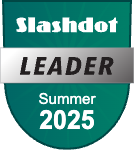This article is part of Beyond the Prompt — a campaign exploring Creativity and AI through the voices of industry leaders. Discover more stories, educational content, and our Shortest AI Film competition on the full campaign page.
AI-generated aesthetics often risk falling into a kind of visual déjà vu. How do you and your team consciously avoid the ‘generic AI look’ when working with these tools?
Claudia Rafael: Most AI images look similar because people rely on one tool or platform and follow the same workflows. At New Format, the creative studio I co-founded, and in my personal work as a digital artist, we mix a wide range of tools — including older ones hardly anyone uses anymore. I often apply them in ways they weren’t originally intended for and actively embrace glitches and imperfections. That’s where unique, interesting visuals happen. The key is to avoid presets and default prompts. Without a clear idea, you just generate random content — and that’s exactly what creates that generic AI look.
And when an AI output feels too predictable or polished, what’s your go-to technique for breaking it open and injecting some rawness or weirdness back into it?
Claudia Rafael: I often intentionally cause errors or combine different AI tools to create unpredictable results. I might take an image from one platform, process it through an old script, or run it through a tool in a way it wasn’t designed for. Mistakes are welcome in my process because they often lead to something unexpected. It’s a bit like a painter layering over a canvas until the image feels right. The weirdness comes from experimentation — and knowing your tools well enough to push them beyond their comfort zone.
Do you think the creative industry is too obsessed with hyperreal perfection in AI imagery – and what visual qualities do you think are missing in most AI-generated content today?
Claudia Rafael: I don’t think the hyperreal look is the problem — that can work beautifully if the idea behind it is strong. What’s missing is originality. Too often, the images feel random, predictable, or soulless. A great example where it works is, amongst others, the AI-generated images of photographer Charlie Engman, whose distinctive, concept-driven style, often surreal, performative, and emotionally complex — translates powerfully even in synthetic form. In the end, it’s not about whether the image is AI-generated or polished — it’s about whether it has a point of view, a message, or a story.

A lot of creatives complain AI work looks the same because people rely on default prompts and presets. What’s your approach to prompt crafting, and where do you see room for more experimentation?
Claudia Rafael: For me, it starts before the prompt. It’s about having a clear vision. If you know what you want, you naturally move away from generic prompts. I experiment a lot — mixing tools, trying outdated scripts, combining AI outputs with CGI or photography, even causing intentional errors. It takes time and practice to develop that skill, just like a painter needs years to master their technique. You can’t fake originality by simply tweaking prompts. It’s a mindset.

Do you see AI more as a creative collaborator or as a medium you have to fight against to maintain originality? How does that tension shape your visuals?
Claudia Rafael: For me, AI is a tool — not a collaborator, and definitely not a source of ideas. The concept always comes from me. If I let AI lead, the result is random. That might occasionally work by coincidence, but it’s not sustainable if you want to build a meaningful, distinctive body of work. The tension lies in balancing what AI can do technically with what I want to express creatively. That’s why experimenting and staying hands-on with the process is so important.
Looking ahead, what visual trends in AI aesthetics are you already tired of — and what kinds of new, untapped directions would you love to explore next?
I wouldn’t say I’m tired of specific trends — everyone should do what they enjoy. What concerns me more is the sustainability of this endless image production. In 2023 alone, over 150 billion AI-generated images were created, when text-to-image was open for public. I Can’t even imagine how many pictures there are at this point. If we worked with clearer ideas and more purpose, we wouldn’t need to overproduce that much. As for what’s next, I’m really excited about image-to-3D technologies. The ability to create high-quality, production-ready 3D models from images will open up amazing new possibilities for digital fashion and worldbuilding. Beyond that, I’m interested in projects where AI connects with physical realities in unexpected ways — but always with a strong human concept at the core.
Learn more about Claudia Rafael here and about NEWFORMAT here.


















.png)







